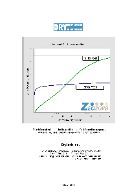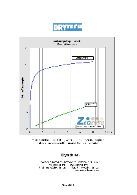Silica Gel
Silica gel is a granular, vitreous, porous form of silicon dioxide made synthetically from sodium silicate.
Used as a desiccant, it works by a process called adsorption. The water in the air actually absorbs between the tiny passages as the air passes through them. The water molecules become trapped so that the air is dried out as it passes through the filter. This process is reversible. If the silica gel desiccant is heated to ~180°F, it will release the trapped water. This process is called regenerating the desiccant.
The fact that Silica Gel desiccant can be regenerated at such low temperatures is both good and bad; it is good because generating heat of ~180°F is fairly easy to do, Silica Gels can be baked in a kitchen oven and effectively be regenerated. The downside to this is that in an actual application, such as a wind turbine gearbox breather, temperatures can reach well above ~100°F which would cause the Silica Gel to partially regenerate and while doing so it would expel its moisture back into the free air volume being protected. This dynamic is crucial to ensuring proper protection for sensitive fluid systems. As temperatures increase, Silica Gel performance drops off drastically. See isotherm charts
Molecular Sieve (ZEOLITE)
A molecular sieve is a material with very small holes of precise and uniform size. These holes are small enough to block large molecules and allow small molecules to pass. Many molecular sieves are used as desiccants.
Used as a desiccant, it works by a process called adsorption. Molecular sieve is our preferred choice of desiccant because despite its adsorption capacity by weight, 20-30% by weight, it has the capacity to dry air down to an extremely low PPMv level, <100 ppm (%RH).
This process of adsorption is reversible, but much more difficult than it is with Silica Gel. Silica gels can be regenerated heating up to 180°F, whereas molecular sieves can be regenerated by heating them to up to ~550°C, it will release the trapped water. This process is called regenerating the desiccant.
Activated Alumina
Activated alumina is manufactured from aluminum hydroxide by dehydroxylating it in a way that produces a highly porous material; this material can have a surface area significantly over 200 square metres/g. The compound is used as a desiccant (to keep things dry by absorbing water from the air) and as a filter of fluoride, arsenic and selenium in drinking water. It has a very high surface-area-to-weight ratio, due to the many “tunnel like” pores that it has.
Used as a desiccant, it works by a process called adsorption. The water in the air actually sticks to the alumina itself in between the tiny passages as the air passes through them. The water molecules become trapped so that the air is dried out as it passes through the filter. This process is reversible. If the alumina desiccant is heated to ~200°C, it will release the trapped water. This process is called regenerating the desiccant.




